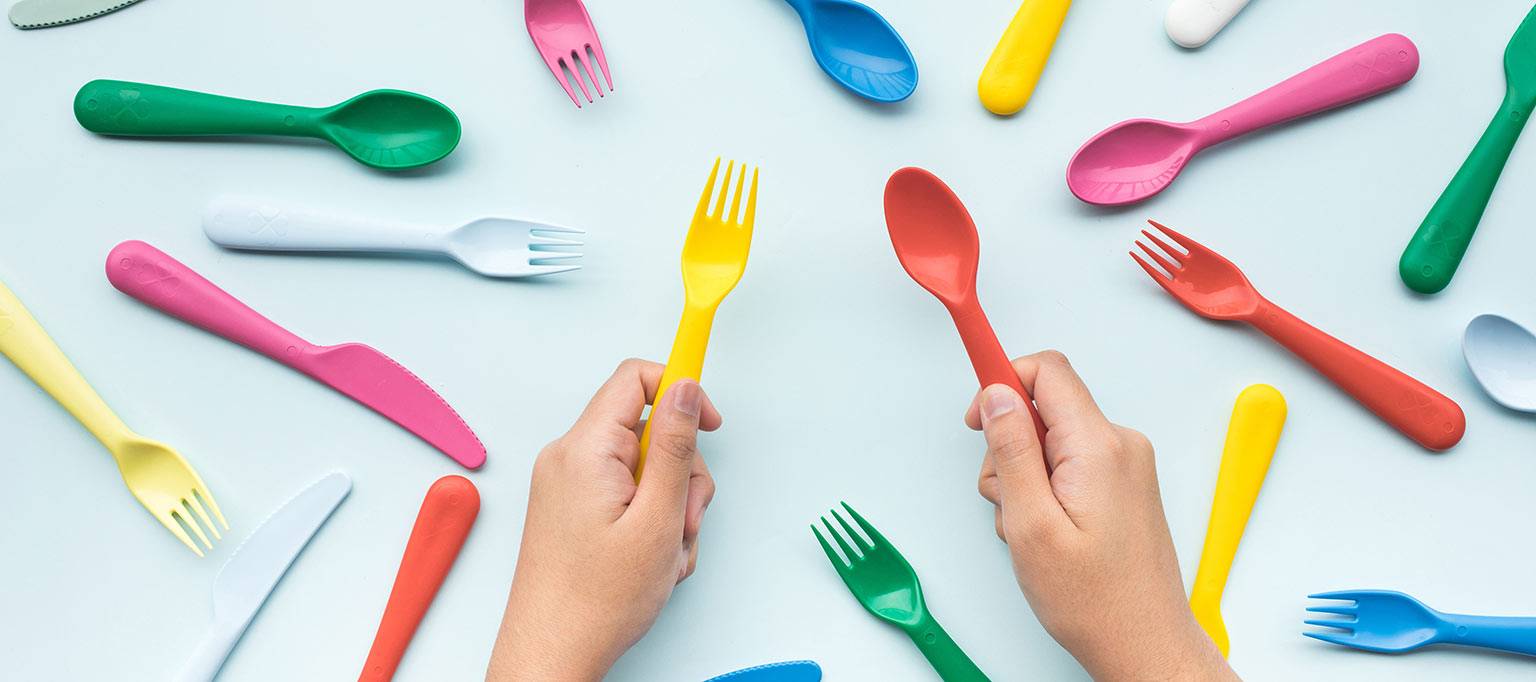Using Cutlery

Cutlery Skills
Positioning
Ensure your child is sat in an upright position with a firm surface underneath them, e.g. a table. If their feet are not able to touch the floor, a step under their feet may be beneficial.
Activities
- Practice stabbing pieces of playdough using a fork and bringing this to the mouth to imitate the action.
- Practice knocking the pieces of playdough off of the fork using the knife.
- Roll playdough into a sausage shape, initially use the left hand to support the playdough and practice the forward and back motion using the knife to cut pieces of playdough. ensure the arm operating the knife is tucked into the body.
- Roll playdough into a sausage shape and place the fork into the putty at a slight diagonal angle. Using the other hand, place the knife next to the fork with a small gap. Practice cutting up small pieces.
- When holding cutlery, ensure your child’s index finger is on top of the cutlery and their thumb is wrapped under.
- Cutlery can often be quite large and difficult to control therefore, try using smaller cutlery initially.
- Practice cutting up one soft item of food on the plate at meal times, e.g. boiled vegetables/potatoes. As your child becomes confident using cutlery, increase the amount of food they cut up on the plate.
Equipment
Playdough and putty are useful to practice cutlery skills with.
Non-slip mats can be helpful to put underneath the plate to prevent this moving when your child is learning how to use a knife and fork. An example of this is Dycem.
If your child is finding it tricky to hold a knife and fork correctly and comfortably they may benefit from using caring cutlery, these come in junior or adult sizes and can be found online.
Associated Services
Children’s Occupational Therapy Service